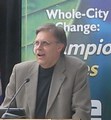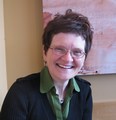WATERSHED CASE PROFILE SERIES: “The work of the DWWP is strategic. It is community based, and makes links interdepartmentally and with external agencies. And that in itself is the super power of what we do. It does not fit into a box of what a usual local government service is or does,” stated Julie Pisani, Program Coordinator for the Drinking Water & Watershed Protection Program in the Regional District of Nanaimo, Vancouver Island (released April 2021)

“The objective and mission of the DWWP program has always been about connecting land and water management. But the RDN couldn’t just leap straight there. We first had to build partnerships, trust, datasets and knowledge. We had to test ideas, learn, earn credibility, and deepen relationships across jurisdictions. The RDN demonstrates commitment to watershed initiatives and water sustainability by delivering the DWWP Action Plan with a long-term reliable funding source through parcel tax,” stated Julie Pisani.










